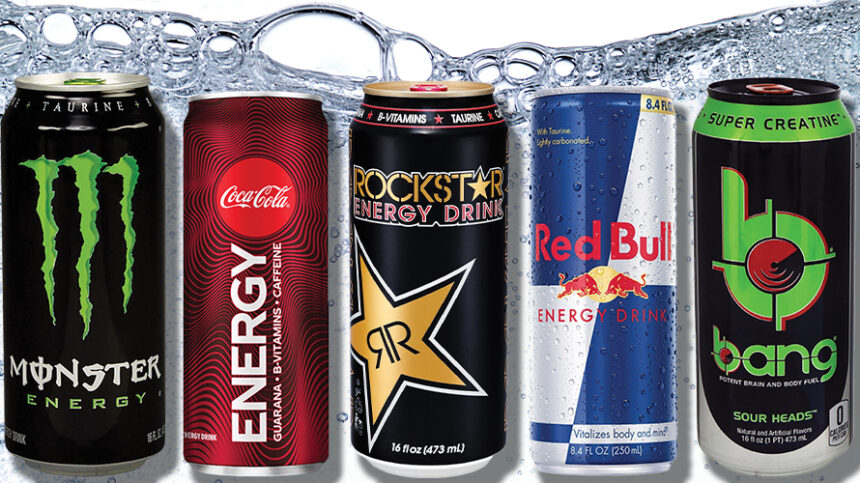In recent years, the market for energy drinks has surged, transforming from a niche category into a mainstream beverage option. Branded energy drinks have become synonymous with active lifestyles, intense workouts, and busy schedules, appealing to a wide range of consumers from athletes to students and working professionals. This article delves into the world of branded energy drinks, examining their origins, key players, marketing strategies, health implications, and future trends.
The Rise of Energy Drinks
Energy drinks first appeared in the late 20th century, with products like Red Bull leading the charge in the early 1980s. The brand popularized the concept of a functional beverage designed to boost energy, enhance alertness, and improve physical and mental performance. Inspired by traditional energy tonics and performance supplements, energy drinks combined caffeine, taurine, B vitamins, and sugar to create a potent concoction that promised a quick energy boost.
The 1990s and 2000s saw an explosion in the number of brands entering the market, as consumers became increasingly health-conscious and sought alternatives to sugary sodas. Today, the energy drink market is dominated by several key players, including Red Bull, Monster Beverage Corporation, and PepsiCo’s Rockstar Energy. These brands have successfully carved out their niches by offering a variety of flavors, formulations, and marketing approaches.
Key Players in the Market
- Red Bull: As one of the pioneers of the energy drink industry, Red Bull has become a household name globally. The brand is known for its bold marketing campaigns, sponsorship of extreme sports, and involvement in music and cultural events. Red Bull’s original formulation remains a top seller, but the company has also expanded its product line to include sugar-free and organic options.
- Monster Beverage Corporation: Monster is another giant in the energy drink market, recognized for its extensive product range and eye-catching branding. The brand appeals to a younger demographic with its edgy marketing and partnerships with professional athletes and esports teams. Monster offers a wide variety of flavors, including energy drinks infused with other functional ingredients like electrolytes and protein.
- Rockstar Energy: Acquired by PepsiCo in 2020, Rockstar Energy has established itself as a key player in the industry, particularly among active lifestyle consumers. The brand’s marketing emphasizes fitness and adventure, and it offers products targeting different consumer preferences, including sugar-free and organic formulations.
- Other Notable Brands: In addition to these major players, numerous smaller brands have emerged, such as Bang Energy, Celsius, and Reign. These brands often focus on niche markets, offering innovative formulations that cater to health-conscious consumers, athletes, and those seeking natural ingredients.
Marketing Strategies
Branded energy drinks rely heavily on marketing strategies to differentiate themselves in a crowded market. Key approaches include:
- Sponsorships and Endorsements: Energy drink brands often sponsor extreme sports events, music festivals, and fitness competitions. By aligning themselves with high-energy activities and popular athletes, they create an image of vitality and performance. For instance, Red Bull’s sponsorship of the Red Bull Stratos project, which involved a skydiver jumping from the edge of space, showcased the brand’s adventurous spirit.
- Social Media and Influencer Marketing: Social media platforms like Instagram, TikTok, and YouTube are essential for reaching younger audiences. Brands collaborate with influencers and athletes to promote their products through engaging content, challenges, and lifestyle vlogs. This approach creates a sense of authenticity and relatability that resonates with consumers.
- Innovative Packaging and Branding: Eye-catching designs and unique packaging play a significant role in attracting consumers. Many energy drink brands utilize vibrant colors, bold graphics, and distinctive logos to stand out on store shelves. Limited-edition flavors and seasonal packaging also generate excitement and urgency among consumers.
- Targeting Specific Demographics: Different brands target specific consumer segments based on lifestyle, age, and interests. For instance, brands like Bang Energy focus on fitness enthusiasts with formulations high in caffeine and amino acids, while others may appeal to gamers or busy professionals looking for a quick energy boost.
Health Implications
While branded energy drinks are marketed as quick energy boosters, their health implications have raised concerns among consumers and health professionals alike. Key considerations include:
- Caffeine Content: Most energy drinks contain significant amounts of caffeine, often exceeding the levels found in coffee. While moderate caffeine consumption can enhance alertness and performance, excessive intake may lead to negative side effects, including anxiety, heart palpitations, and sleep disturbances.
- Sugar Levels: Many traditional energy drinks are high in sugar, contributing to increased calorie intake and potential weight gain. Health organizations recommend limiting added sugar consumption due to its association with various health issues, including obesity and diabetes. In response, several brands have introduced sugar-free alternatives to cater to health-conscious consumers.
- Vulnerable Populations: Young people, including teenagers and children, are particularly susceptible to the effects of energy drinks. Health experts advise caution when it comes to these beverages, as their bodies may be more sensitive to caffeine and other stimulants. The consumption of energy drinks among adolescents has raised concerns about increased risk of cardiovascular issues and negative impacts on developing brains.
- Regulation and Labeling: The energy drink industry has faced scrutiny regarding marketing practices and labeling transparency. Some countries have implemented regulations to restrict sales to minors or mandate warning labels on products containing high caffeine levels. Consumers are increasingly demanding transparency regarding ingredients and potential health risks, prompting brands to provide clearer labeling.
Future Trends
The branded energy drink market is evolving, influenced by changing consumer preferences and emerging trends. Key future directions include:
- Healthier Formulations: As consumers become more health-conscious, brands are responding by offering products with cleaner ingredients, lower sugar levels, and added functional benefits. Natural sweeteners, plant-based ingredients, and adaptogens are becoming popular additions.
- Sustainability and Environmental Awareness: With growing concerns about environmental sustainability, energy drink brands are exploring eco-friendly packaging options and sustainable sourcing practices. Brands that prioritize environmental responsibility may gain a competitive edge as consumers seek out products aligned with their values.
- Functional Beverages: The lines between energy drinks and other functional beverages, such as sports drinks and wellness shots, are blurring. Brands are increasingly incorporating additional health benefits, such as electrolytes, vitamins, and minerals, into their formulations to appeal to a broader audience.
- Innovation and Experimentation: The energy drink market is characterized by constant innovation. Brands are experimenting with unique flavors, hybrid products, and new marketing approaches to capture consumer attention. Limited-edition releases and collaborations with other brands or celebrities are likely to continue as a trend.
- E-commerce and Direct-to-Consumer Sales: The rise of e-commerce has transformed the way consumers purchase energy drinks. Brands are increasingly utilizing direct-to-consumer sales channels, allowing for greater engagement with customers and more personalized marketing efforts.
Conclusion
Branded energy drinks have become a significant player in the beverage industry, appealing to a diverse consumer base seeking quick energy boosts and enhanced performance. While the market continues to grow and evolve, it faces challenges related to health implications and consumer awareness. As brands navigate these challenges and adapt to changing preferences, the future of branded energy drinks will likely be shaped by a focus on health, sustainability, and innovation.
Ultimately, understanding the energy drink landscape allows consumers to make informed choices, balancing their desire for energy with considerations for their health and well-being. With ongoing developments in formulations, marketing strategies, and consumer preferences, the energy drink market is poised for continued growth and transformation in the years to come.












